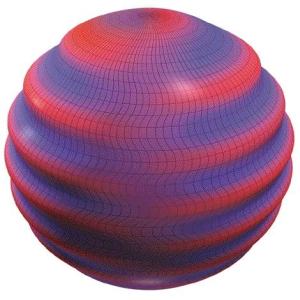Quote from: zeebo on April 04, 2014, 11:04:07 PM
Paging Agent and/or other cosmological gurus .... I'm confused on what's referred to as 4-dimensional space. Sometimes I hear that "Time is the 4th dimension". Other times, the 4th dimension is referred to as in the hypercube idea as the true structure of space whose warpings and such are what we feel as gravity.
So question is: Is the 4th dimension "time" or is it a higher dimension of "space"? (Notice: No "5th Dimension / Age of Aquarius" jokes allowed.)
Time is the fourth component along with three spatial dimensions of space-time, which is involved in general and special relativity.
However, you can also talk about a fourth spatial dimension which would just be a direction perpendicular to the three we're familiar with. String theory is defined in 11 dimensions, 10 of which are spatial (ie, there is one time-like dimension).






